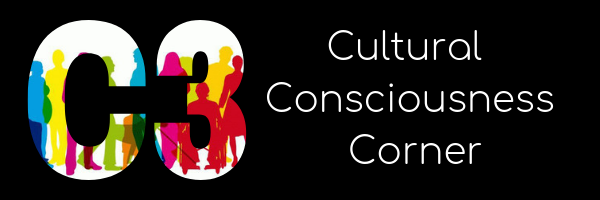Gender Bias: The Early Beginnings
By Diversity Solutions Group
“Gender is a key determinant of who does what, who has what, who decides and who has power.” –UNICEF
Gender refers to the socially constructed roles, behavior, activities and attributes that a given society at a given time and place considers appropriate for men and women, boys and girls and the relationships between them.
The question of how gender differences arise in early life is a central topic in psychology. Experts agree that nature (i.e., biology) and nurture (i.e., environment) act together in reciprocally causal, interactive ways to produce gender differences. The experiences afforded to girls and boys within educational systems are known to affect gender differentiation both directly and indirectly. In nearly all psychological traits on which young boys and girls differ (e.g., reading ability, play preferences), the distribution of the two groups is overlapping. Schools/educators can magnify or diminish gender differences by providing environments that promote within-gender similarity and between-gender differences, or the inverse (within-gender variability and between-group similarity).
Schools are major contexts for gender socialization via two primary sources: teachers and peers. Children spend large amounts of time engaged with peers in such settings. Peers contribute to the gender socialization of children via multiple ways. Many of them model traditional gender behaviors, often reinforcing gender stereotypes. Peers also contribute to gender differentiation by teaching each other stereotypes (e.g., “Short hair is for boys, not girls”) and punishing others for failing to conform to stereotypes via verbal harassment and physical aggression.
How do teachers contribute to gender differences?
Many educators endorse cultural gender stereotypes (e.g., math is easier for boys than girls) and prejudices (show preferences for same-gender individuals). These biases can be explicit (e.g., consciously endorsed) or implicit (unconsciously held), and they influence teachers’ classroom behaviors.
Educators’ gender stereotypes and prejudices shape their classroom behavior in at least three ways. First, educators often model gender stereotypic behavior. Female educators, for example, often exhibit “math phobic” behaviors. Second, educators often exhibit differential expectations for males and females (e.g., creating “dress-up” and “construction” centers and accepting—even facilitating—gender-differentiated use). Third, educators facilitate children’s gender biases by marking gender as important by using it to label and organize students. In one study, educators were asked to use gender to label children and to organize classroom activities by, for example, greeting children with “Good morning, boys and girls” and asking children to line up by gender. Other educators ignored students’ gender. Young children whose educators labeled and used gender showed higher levels of gender stereotyping than their peers. Preschool educators’ labeling and use of gender increases their students’ gender stereotyping and avoidance of cross-gender playmates.
Conclusion:
Schools are important for the socialization of young children’s gender attitudes and behavior. Educators and classmates shape children’s gender attitudes and, in turn, gender differences in cognition and behavior. Educators must recognize and combat gender stereotypes and prejudices—their own and others—and model, expect, reinforce, and lay the foundation for gender egalitarianism among their students. Educators who adopt a commitment to gender egalitarianism and promote cross-gender interaction, expose students to counter-stereotypic models. By discussing and challenging gender stereotyping and harassment, they optimize their students’ developmental outcomes.
Some Tips and Resources:
https://www.unicef.org/gender/files/Overarching_Layout_Web.pdf
https://www.youtube.com/watch?v=hLr2GNRnmXM
https://www.youtube.com/watch?v=G3Aweo-74kY
https://www.youtube.com/watch?v=nWu44AqF0iI
https://e2epublishing.info/blog/2016/9/11/tips-to-promote-gender-equality-in-your-classroom
Look for C3’s next article in our July newsletter.
Sources:
- Klein S.Handbook for achieving sex equity through education. Baltimore, MD: The Johns Hopkins University Press; 1985.
- Thorne B.Gender play: Girls and boys in school. New Jersey: Rutgers University Press; 1993.
- Iegle-Crumb C, Humphries M. Exploring bias in math teachers’ perceptions of students’ ability by gender and race/ethnicity. Gender & Society. 2012;26(2):290-322. doi:http://dx.doi.org/10.1177/0891243211434614.
- Beilock SL, Gunderson EA, Ramirez G, Levine SC. Female teachers’ math anxiety affects girls’ math achievement. Proceedings of the National Academy of Sciences of the United States of America.2010;107(5):1860-1863. doi:http://dx.doi.org/10.1073/pnas.0910967107.
- Thorne B.Gender play: Girls and boys in school. New Jersey: Rutgers University Press; 1993.
- Bigler RS, Liben LS. A developmental intergroup theory of social stereotypes and prejudice.San Diego, CA: Elsevier Academic Press; 2006:39-89.
- Bigler RS. The role of classification skill in moderating environmental influences on children’s gender stereotyping: A study of the functional use of gender in the classroom. Child Development.1995;66:1072-1087.
- Hilliard LJ, Liben LS. Differing levels of gender salience in preschool classrooms: Effects on children’s gender attitudes and intergroup bias. Child Development.2010;81(6):1787-1798.


